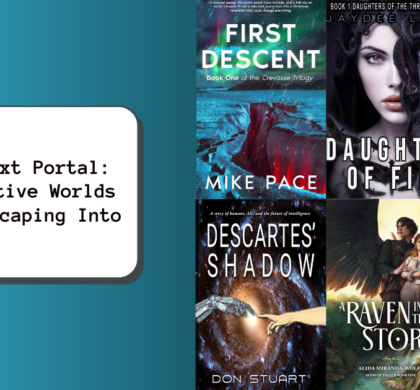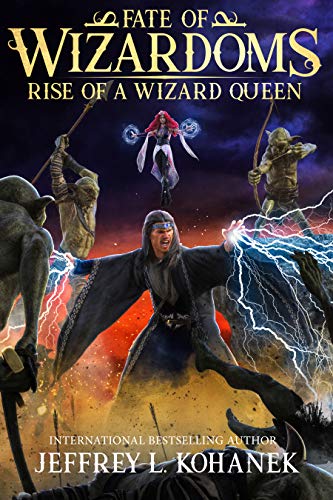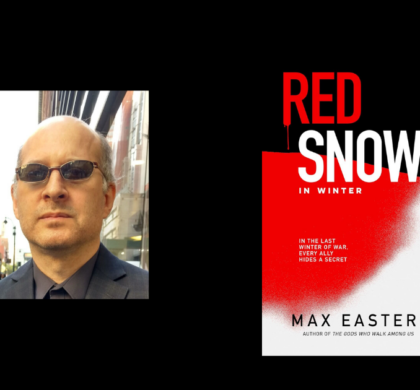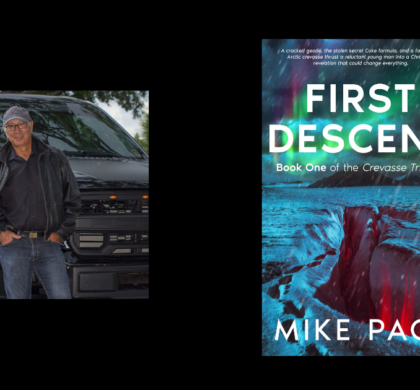The Story Behind Fate of Wizardoms by Jeffrey L. Kohanek
14 Jul 2020
What inspired this book? It is a common question for authors. While we can try to toss out short summaries, the answer we wish to provide is far more complex because there are many elements to a book or series (characters, plot, worldbuilding, politics, themes, religion, magic system…). So, rather than attempt to summarize my Fate of Wizardoms series, I decided to break it down into the four key elements and the inspiration behind each.
Characters
I had to begin with characters because they are so important to me as a reader. The more I am drawn to the characters in a book, the more tolerant I am of any other aspect falling short of expectations.
Here are the key characters from Eye of Obscurance, the first book in the series.
Jerrell “Jace” Landish: I list Jace first because he is the central character, which is not easy because he is not a fierce warrior or powerful magic user. Instead, he was inspired by the likes of Mat Cauthon, Han Solo, Star Lord, Locke Lamora, and Kaz Brekker. He is clever, arrogant, and a complete rogue. As a thief for hire, his exploits have become legendary, forcing him to use alternative names or face fierce distrust from others. His sharp tongue and flamboyant nature make him a blast to write. Yes, he is a scoundrel, especially in the first book, but he has a core of loyal integrity beneath his self-centered exterior.
Rhoa Sulikani: In nature, Rhoa is similar Lyra, to the main character from my book, Rogue Legacy. She is fierce, brave, and determined. When she was nine years old, her parents were taken from her, a tragic event that molds her personality and motivations. I wrote her in as an acrobat as a plot tool, partially driven by the opening scene of the book, and because I wanted to include a menagerie (circus) as a unique element of the world. Although not an inspiration because she existed before I read the book, she is quite similar to Inej from Six of Crows.
Narine Killarius: As a princess and wizardess, Narine grew up in a different reality, pampered in every way…until you realize neither her father nor brother offer an ounce of affection(her mother died when she was a toddler). Although beautiful and curvy, she envies her bodyguard, Adyn for her lean frame and athletic prowess – classic “grass is always greener”. Narine really gets a chance to shine in the second book and beyond, joining Jace as a true “central character”. In fact, by the middle of book three, I have a total crush on Narine, and I am the author! She is a sort of conglomeration of women from Wheel of Time, combining the aspects I liked best from Egwene, Elayne, and Nynaeve.
Rawkobon Kragmor: Rawk is a dwarf of a different sort. Unlike his brethren, who take great pride in their beards, Rawk is hairless and has been treated as an outcast his entire life. When Rawk violates a sacred law of his people, he is cast out of his mountain home. Shy and reserved(very undwarf-like), Rawk is loyal to a fault to those he cares for. Also, he can do a special type of magic and his unique abilities become critical tools at opportune times. I very intentionally made Rawk a non-standard dwarf and needed a character who just didn’t fit in his society.
There are other characters, including scheming antagonists, power-hungry wizards, a world-traveling storyteller, a huntress, a jaded ex-soldier, dwarfs, elves, seers, and many others. Also, I happen to love dialogue, particularly banter. The interactions between these individuals is among my favorite elements of the series.
Worldbuilding
This is a big subject for epic fantasy, and like most of my favorites, this world began with a map. My love affair with fantasy maps has gone on for ~35 years. I enjoy maps, the terrain, weather, and how it affects the story. I sketched out a map as I built my world (later paid a pro to make it pretty).
Before I had a plot, I knew I wanted the world to have a long history and one where magical beings such as dwarfs, elves, dragons, and others were legendary. Having been absent from the world for 2,000 years, the general populace believes them nothing more than myth. This would enable a sense of wonder and discovery when these beings return.
The lands to the distant east are split from the wizardoms by impossibly high peaks, too high to breath even in the saddles. The only means to reach these lands is to circle around through the frigid tundra to the south or to journey through the chasms known as The Fractured Lands: The battlefield between mankind and darkspawn from the Murlands.
I also wanted this series to explore many of the most classic epic fantasy tropes, turning some on their head while explaining others in a new manner. A simple one was to set the continent in the southern hemisphere with a hot, desert land in the north, ice fields in the south. Much of the middle ground is around a sea that is very much like the Mediterranean, climates moderate throughout the year.
Each wizardom has its own culture, some more exotic than others. The capital cities are ancient, built by a lost race known only as the Makers. Each of those cities has a structure called the Tower of Devotion while the smaller cities each have an obelisk used for the same purpose. These are critical elements to both the plot and the magic system of the world.
Magic Systems
I am enthralled with magic, both mystical and defined. My love for “super human abilities” began with Marvel comics when I was five years old, and magic is an extension of that love affair. Those who have read my Issalia books might see the connection between the uses for magic and what you would find in a Marvel movie.
In the Wizardoms world, there are various types of magic. The most common is wizardly magic.
Wizards are the ruling class, those born with a natural ability to harness magic fall into this category, their very blood sparkling with the unique metals that enable this gift. Conversely, the rest of the population is simply known as “ungifted”.
Going back to Marvel, Doctor Strange was an influence on the magic wizards utilize. A wizard gathers latent energy, converting it to magic, and a slice of it is used to form a construct around their hand. Each construct is a unique pattern that will yield a specific result. The wizard funnels the remainder of the gathered magic through the construct and the spell is cast. Think of it like aiming a bright light through a lens, filtering the light into another shape or color. A heat construct with enough magic channeled through it turns to a spout of flames. Another heat construct could form a fireball…you get the idea.
While wizards have a natural ability, they must train to memorize these constructs, perfecting the patterns, learning how to use or combine these spells, and comprehending the consequences of each execution. A poorly formed construct can yield disastrous results. Overextending yourself or holding the magic too long can burn out the user, igniting the metal in their own blood.
The magic does not end there, for there is sorcery, or “blood magic, mystical magic, inherent magic abilities, and outright magical creatures in the world of wizardoms.
Gods and Wizard Lords
From the onset, I wanted gods, or the power of gods, to have a heavy hand in this world. These gods do not walk among us, but they do connect with society in a meaningful way by gifting wizard lords with extraordinary abilities.
Once a god anoints a wizard lord, the wizard becomes close to immortal, able to wield far more magic than a typical wizard while also possessing the ability to instantly heal themselves. Cut them with a poisoned blade, they will seal the wound and burn the poison from their blood in an instant. This magic extends their life, some surviving more than three centuries.
Wizard lords derive their power through the prayers of their people, citizens forced to participate in an act of Devotion every evening. How does this work? The capital city of each wizardom contains a Tower of Devotion. A persistent fire burns at the top of these towers — a magical light created by a crystal throne. When the wizard lord sits upon that throne and embraces his magic, the fire becomes a blazing inferno and beams of light connect to the other cities in the wizardom, each of which contains an obelisk with a similar fire. These magically powered pylons collect the prayers and draw them into the wizard lord. The rub: these rulers are essentially trapped in their own city, reluctant to even miss one day of Devotion should they stray too far from the tower.
Closing Comments
As we come to the end of my blog post, you likely noticed the lack of detail about the plot. I prefer to leave that arena dark until you embark on your journey. I abhor spoilers and would hate to ruin the surprises that await you. Rise of a Wizard Queen, the fifth entry in the six-book Fate of Wizardoms series is now released for your reading enjoyment. The final entry comes at the end of August. I cannot wait to share it with my loyal and eager readers.

Jeffrey L. Kohanek is the author of the new book Rise of a Wizard Queen.
Connect with Jeffrey
Author Website
Facebook
Buy The Book
Sign up for our email and we’ll send you the best new books in your favorite genres weekly.
Related
grant
Recommended Posts

Your Next Portal: Speculative Worlds Worth Escaping Into
12 Dec 2025 - Books to Read if You Like..., eBook, Fantasy & Science Fiction


